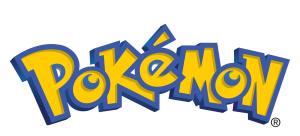If you were a child any time in the 1990s, chances are you grew up with Pokemon: watching it on TV, playing the games on your Gameboy Color, collecting hundreds of trading cards, and decorating your room with Pokemon toys and bedspreads (Lauren even had an inflatable Bulbasaur chair!). And these mediums do not even begin to cover how huge the Pokemon empire is because we did not even mention the manga series, movies, and other forms of the franchise. Pokemon is a prime example of transmedia storytelling, which is succinctly outlined in these two blogs by Henry Jenkins.
“But wait!” you may say, “you guys just said that Pokemon was a fad from the 1990s. This is 2013! Also, isn’t Pokemon just a kid’s game?”
Au contraire, mon frere.
Pokemon is still very much alive and quite popular with boys and girls as young as four and on up to men and women as old as forty. There is something universally engaging about the series. The youngest fans may just watch the TV show and play with toys, but as the age increases, the market possibilities expand. It features a protagonist, Ash in the TV show, and a large range of male and female characters within the games, who, at the age of ten, receives a Pokemon from a Professor. The protagonist then goes on a journey in which he or she befriends a number of the now 718 Pokemon in the universe. The protagonist battles, solves puzzles, defeats bad guys, and ultimately, of course, becomes the most powerful trainer in the game. And this just outlines the game series. As we mentioned before, there is a enormous manga series that details an entirely different story than the TV show, a plethora of fan-made and official websites, and an extensive card game enjoyed by people young and old casually and competitively.
So, to follow the guidelines of Henry Jenkins’ idea of transmedia storytelling…
“Transmedia storytelling is a process. Elements of a fiction get dispersed across multiple media for the purpose of creating a coordinated entertainment experience.”
As we have already discussed, Pokemon is incredibly versatile as far as how the content is dispersed.
“A transmedia text does not simply disperse information: it provides a set of roles and goals which readers can assume as they enact aspects of the story through their everyday life.”
Within the game, some of the main goals and roles are: traveling as a Pokemon trainer, catching all of the Pokemon (remember the slogan: “Gotta catch em all!”), getting all of the gym badges, defeating the Elite Four, and completing side quests.
Included with the games HeartGold and SoulSilver was a physical device called the Pokewalker, shown below. Players were encouraged to transfer a Pokemon from their games to it and keep it in their pockets as they walked around during their days. For each step, the Pokemon inside gained experience points and could even level up.
With the trading cards, goals are simple: collect as many trading cards as possible, trade them with friends, battle them with friends, and if you’re really good at the game and really lucky, attend special events like the tournaments mentioned above.
Transmedia storytelling is the ideal aesthetic form for an era of collective intelligence.
Our generation did not necessarily have computers at a young age, but we all had TVs, bookstores, and video games. The Nintendo company made a very smart move when they sold and conveyed Pokemon media through many formats. As computers have become more prevalent and easy to use, fans have created tons of websites and even games online in efforts to comprehend and drill deeper into the ever-expanding world of Pokemon.
Each individual episode must be accessible on its own terms even as it makes a unique contribution to the narrative system as a whole.
We could pick up the trading card game tonight and learn to play without any knowledge of the TV show or games and still have a great time. The same concept applies to the games. While each contributes new ideas, Pokemon, regions, and stories, they can be viewed, played with, and enjoyed as separate entities.
Transmedia stories are based not on individual characters or specific plots but rather complex fictional worlds which can sustain multiple interrelated characters and their stories.
The world of Pokemon is still a mystery. Do real life animals exist in the world of Pokemon? What is the difference between a dog and a Growlithe beyond the fire-breathing powers? What do they eat? How do water Pokemon spontaneous generate water when they are away from a source?
Sometimes Pokemon appears to exist on a planet that is not our own, sometimes it exists in our world. Each set of games starts in a new “region” and encounters new people, Pokemon, and concepts, while still retaining the identity of Pokemon. In the TV show, characters traverse regions and run into old friends and enemies sometimes many seasons after their original introduction. There is a new animated show that even breaks the rule of Ash as the protagonist, called Pokemon Origins.
There is an incredible amount of opportunities to become immersed in the world of Pokemon yourself, from playing the games to cosplaying at conventions or creating your own videos, like the one below (language warning).
We firmly believe that these ideas prove Pokemon is much more than “just a kid’s game” and is an intricate, interesting example of transmedia storytelling.


I think it would be neat to incorporate some elements of Transmedia Storytelling into a classroom environment. Maybe have students contribute to a wiki site where they use their knowledge to add to a larger discussion of a work of literature. Writing fanfiction about a work could be an interesting exercise as well. I know that I personally would have enjoyed writing an alternate ending to Ethan Frome or to a Shakespeare play (or two).